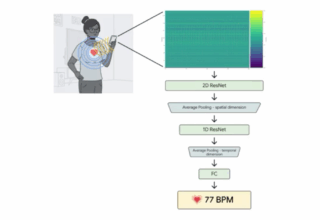
Keeping international borders secure is an important and resource-intensive job. Illegal immigrants, criminals, human traffickers, smugglers, and potential terrorists can cross anywhere along theseboundaries. Simply building a wall is not enough. People and technology must be deployed in order to monitor the movement of individuals and assess possible threats.However keeping international borders secure is a job that is often easier said than done.
Safeguarding borders present various challenges. Some borders may be too long and extend across great expanses of lands, the terrain may be inaccessible or inhospitable, or the flow of people and goods may betoo massive. The thing is, border security agents need access to information and the right communication tools in order to keep the borders safe. Agents may find that by the time that they reach a suspected breach at the borders, the perpetrators have already been long gone or that damage had already been done. Because borders are often extensive and run across areas disconnected from traditional power and communication grids, wireless broadband technologies can be utilized byborder security agencies to help them perform their jobs more effectively and efficiently.
The Role of Wireless Broadband Technology
Sensors, radars, and video cameras used to detect suspicious activities generate a lot of data. However, these data are only useful if they reach the people that are able to turn them into actionable information. Wireless broadband systems allow suchdata to be backhauled to a central hub, local command center, or headquarters in a timely manner. The information can then be analyzed by authorities and allow them to make informed decisions. Field agents or other assets can be deployed as needed, and real-time communication and monitoring can be performed by these deployed personnel.
Even as field agents are able to access the information that they need in real time, personnel at the command center can also communicate with agents on the field or accessremote surveillance cameras or sensors to track suspects.Moreover, wireless broadband technologies allow for connectivity between different command centers and multiple agencies across different jurisdictions. These various entities can then collaborateand assist oneanother, enabling them to perform their jobs better.
Reliability and Security
While wireless broadband technologies greatly help in keeping borders secure, it is important to ensure that the solutions in useare reliable and secure. The network should be able to function despite environmental interferences.For instance, it must be able to function even ininclement weather conditions, whether in thunderstorms, hurricanes, or blizzards. It must also be able to operate despite being deployed outside traditional power grids, as some border areas are situated inremote rural locations. Most importantly, the network itself must be secured and safe from cyber intrusion.Attackers have the capability to compromise wireless networks with the goal of stealing data or interfering with operations for their own gain.As they are becoming more resourceful when it comes to subverting detection techniques, agencies must make sure to protect their networks from such deliberate attacks.
Information as a Resource
In keeping international borders secure, information is the most valuable resource. Wireless broadband technology ensures that information can reach appropriate authorities and border securitypersonnelwho can then act on the information quickly and effectively. The right information in the hands of the right people at the right time can truly help safeguard the frontiers.



















